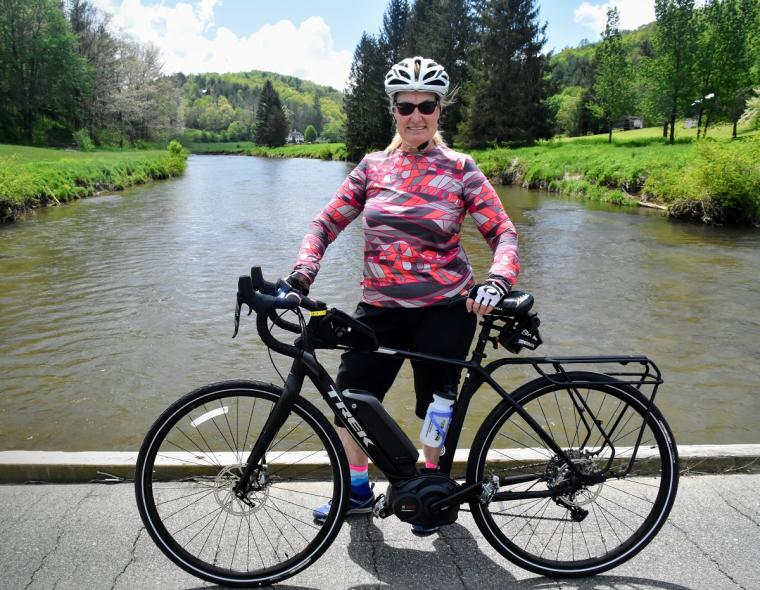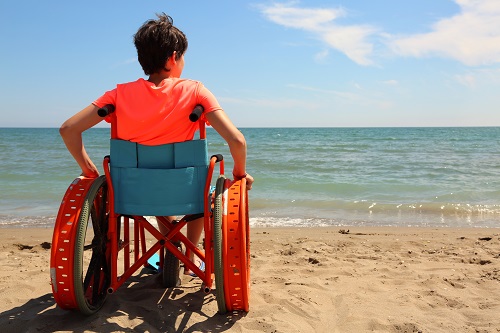
Although it perhaps got lost in the daily bombardment of news, the National Park Service in February released data that shows visitation to America’s national parks has undergone subtle shifts in patterns after two years of efforts to bolster visitation at lesser-known parks and at times of the year when parks historically saw fewer visitors.
NPS statisticians also crunched the numbers to see what kinds of parks people visited in 2022; parks known for recreation opportunities drew the highest percentage of visitors at 38%.
Both nuggets are good news for sports event planners, especially as they seek opportunities in new destinations.
Look at Great Smoky Mountains National Park, which spans parts of North Carolina and Tennessee and has made public lands more accessible for visitors of all abilities this summer by offering three new adaptive programs. In partnership with Tennessee’s Knox County, Catalyst Sports and Friends of the Smokies, rangers and volunteers will lead one biking and two hiking programs using off-road wheelchairs and adaptive mountain bikes on trails evaluated for adaptive equipment. One program each will take place in late July, late August and early September.
 “Programs in Great Smoky Mountains National Park play a vital role in fostering an adaptive community, as they offer an opportunity for individuals to connect with and understand the natural world around them,” Eric Gray, CEO of Catalyst Sports, a non-profit organization that provides outdoor adventure opportunities for people with physical disabilities, said in a statement. “People can engage in activities that promote environmental awareness and conservation, thereby cultivating a deeper sense of stewardship and responsibility for the park’s resources.”
“Programs in Great Smoky Mountains National Park play a vital role in fostering an adaptive community, as they offer an opportunity for individuals to connect with and understand the natural world around them,” Eric Gray, CEO of Catalyst Sports, a non-profit organization that provides outdoor adventure opportunities for people with physical disabilities, said in a statement. “People can engage in activities that promote environmental awareness and conservation, thereby cultivating a deeper sense of stewardship and responsibility for the park’s resources.”
When the adaptive program schedule concludes, two GRIT Freedom Chairs, a type of off-road wheelchair, will be available for visitors to check out and use on park trails evaluated for the equipment.
“Adaptive equipment like the GRIT Freedom Chair allows people the ability to move beyond the pavement to explore areas that wouldn’t be possible to access without these valuable mobility devices,” Carly Pearson, the Americans with Disabilities Act Coordinator for Knox County, said in a statement.
The adaptive programs and GRIT Freedom Chairs were provided via a $16,390 grant from the National Environmental Education Foundation’s Ensuring Access and Enjoyment for All Visitors through Assistive Technology and Inclusive Programs.
In other NPS news, officials earlier this summer announced an open comment for members of the public and local, state, tribal, and federal agencies to provide feedback on a programmatic environmental assessment (PEA) that evaluates the potential national-level impacts of e-bike usage in national parks.
“E-bikes can have many benefits for parks and visitors including making travel easier, expanding access for those with physical limitations, and providing healthy recreation opportunities,” according to an NPS statement. “At the same time, the NPS must manage this emerging form of access and recreation, like others that occur in park areas, in a manner that protects park resources, values, and visitors. The PEA evaluates potential impacts to natural and cultural resources, … visitor use and experience, and wildlife on a national scale.”
“The National Park Service in 2019 decided to allow e-bikes wherever conventional bikes were allowed on roads and on its 16,000 miles of single-track trails,” according to Maryland-based BayJournal.com. “But after a consortium of conservation groups sued, a federal judge in July 2022 ruled that the agency must invite public views and weigh effects on the environment, including wildlife, because those weren’t considered in setting the open-ended policy.”
All told, nearly 312 million people made recreation visits to the national parks in 2022. But as
National Geographic recently noted, there are only 63 national parks “with the scale and amenities that can support visitation.” What’s more, 20 states do not lay claim to a national park.
With that in mind, the magazine named seven sites that could potentially become the 64th U.S. national park.
“The U.S. is full of worthy candidates. But national parks are created through congressional legislation, and there are many considerations, including available infrastructure such as roads and restrooms,” writes Miles Howard, co-author of Moon New England Hiking and the founder of the 27-mile Walking City Trail across Boston’s parks and forests. “Community advocacy can help fuel the effort.”
Here’s the list Howard and the magazine came up with:
1. Ocmulgee Mounds National Historical Park (Georgia)
2. Craters of the Moon National Monument and Preserve (Idaho)
3. Katahdin Woods and Waters National Monument (Maine)
4. Chiricahua National Monument (Arizona)
5. Shawnee National Forest (Illinois)
6. Delaware Water Gap National Recreation Area (New Jersey/Pennsylvania)
7. Tongass National Forest (Alaska)
TravelAwaits.com notes that the last time a national park was designated occurrred in December 2020, when the New River Gorge National River in west Virginia became New River Gorge National Park and Preserve.

